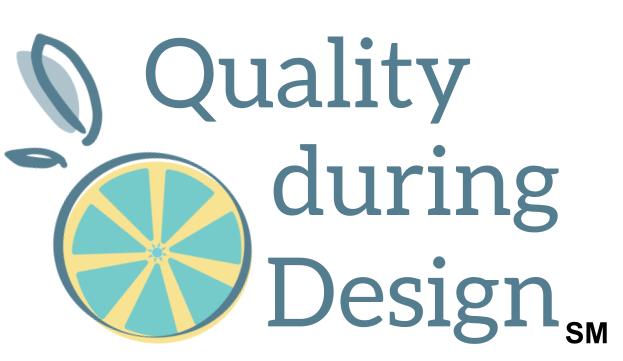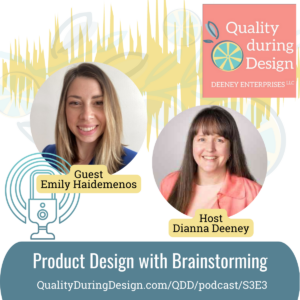Product Design with Brainstorming, with Emily Haidemenos (A Chat with Cross Functional Experts)
Dianna Deeney interviews Emily Haidemenos about product design with brainstorming. She hosted a workshop at a conference about this topic, titled “Brainstorming: The Solution to Structured Problem Solving”.
This interview is part of our series, “A Chat with Cross Functional Experts". Our focus is speaking with people that are typically part of a cross-functional team for new product development. We discuss their viewpoints and perspectives regarding new products, the values they bring to new product development, and how they're involved and work with product design engineering teammates.
About Emily
Emily has a master's degree in Design and Manufacturing Engineering from the University of Massachusetts Lowell. After initially working as a Design Engineer, Emily left and moved into a New Product Development Quality Engineering position. In this role, she worked with multiple cross-functional engineering teams to ensure the effectiveness of quality systems while earning her Six Sigma Black Belt certification. Now as a Chief Engineer for next generation high voltage automotive products, she aims to grow and develop a team of technically competent individuals who realize their maximum potential.
Emily and Dianna talk about:
- some of the common pitfalls of brainstorming from a perspective of taking defensive action against those pitfalls.
- the basic steps of brainstorming, but then circle back to the planning phase. There’s a lot we can do in the planning phases, and Emily shares specifics about planning for brainstorming so we can get the most out of it. Including setting up those defenses.
- best practices for leading a brainstorming session. Emily shares the successes she’s had with it, and what her team thinks about it.
Listen to be inspired to either take on brainstorming or change-up how you’re doing your sessions!
7 Steps of Brainstorming
- Frame our Challenge / Write the Problem Statement
- Choose and invite our team
- Select a method for brainstorming
- Generate ideas
- Group and prioritize ideas
- Define and refine
- Choose actions and assign owners
Some highlights
- Spend time planning a brainstorming session. Consider Emily's tips for defenses against common productivity blockers.
- Choose a team with different experience levels.
- Consider a silent activity as the first activity.
- Try a 2 X 2 chart to define criteria for which to rate ideas.
What can you do today?
Practice writing the problem statement (the first step).
- We can use this statement with any problem-solving method.
- Sharing it gets the whole team on the same page, interpreting the problem the same way.
- Use it to better communicate with upper management.
- Check your solution against it - have you really solved the problem?
Emily recommends:
Harvard Business Review articles
Why Virtual Brainstorming Is Better for Innovation (hbr.org)
Why Group Brainstorming Is a Waste of Time (hbr.org)
Try this overview collection about brainstorming: Get Better at Brainstorming: Our Favorite Reads (hbr.org)
Miro Blog
They publish recommendations on brainstorming and alternative brainstorming tools & prioritization tools – all in one place!
How to make brainstorms inclusive of thought diversity | MiroBlog
5 Remote Icebreakers | Icebreaker Games and Activities | Miro
20 Brainstorming Techniques for Generating Better Ideas | Miro
Connect with Emily
Find her on Linked-In.


